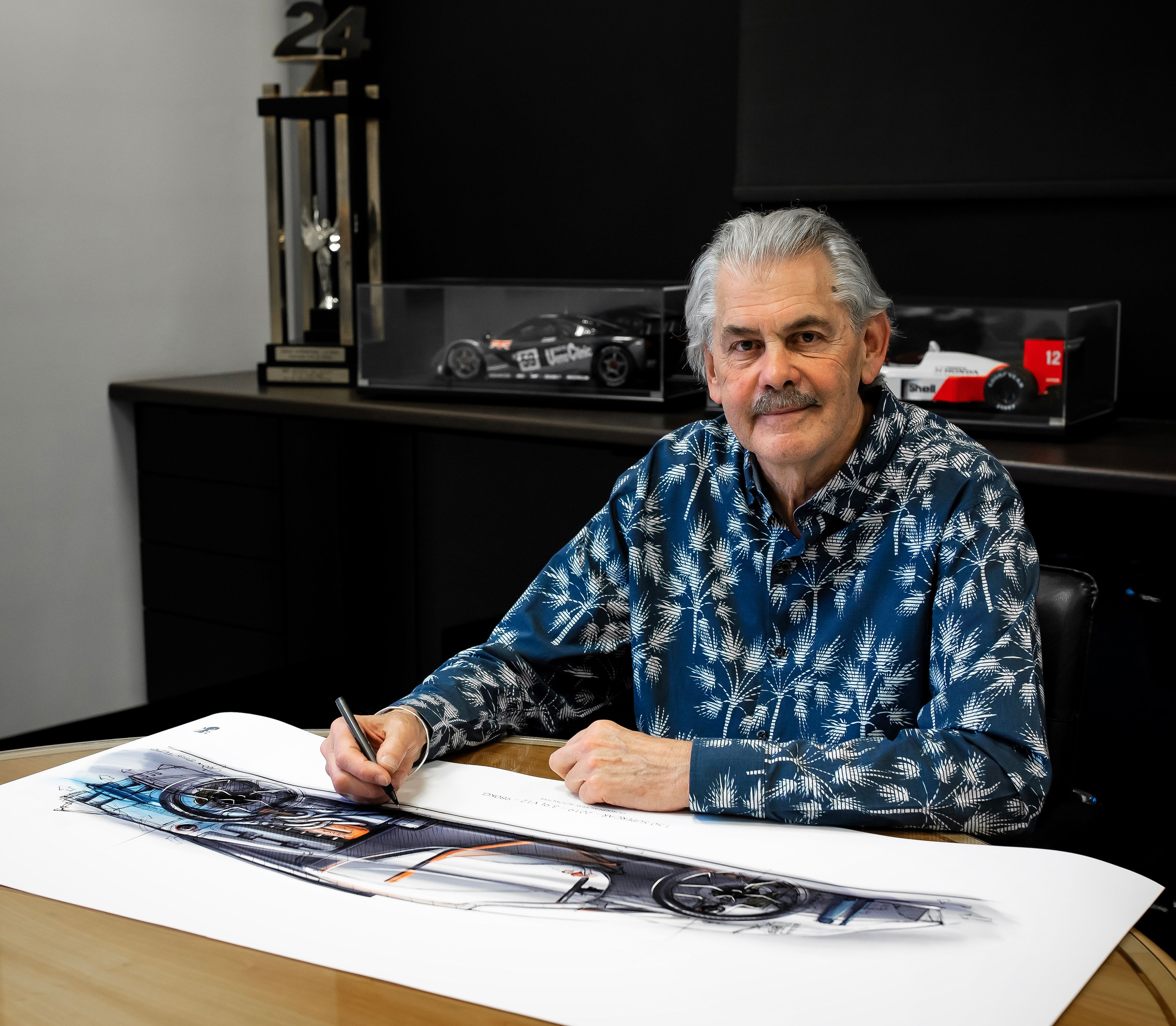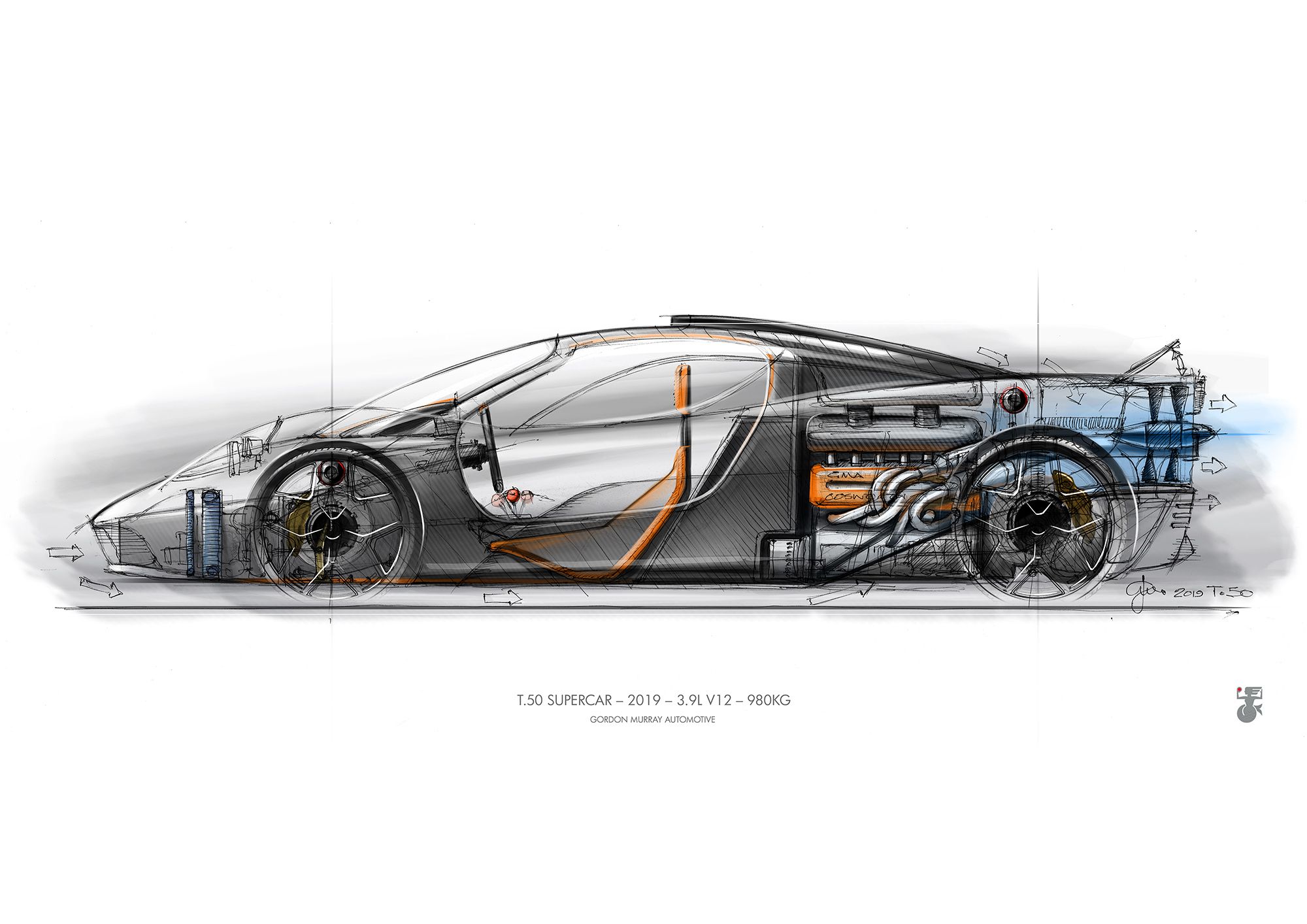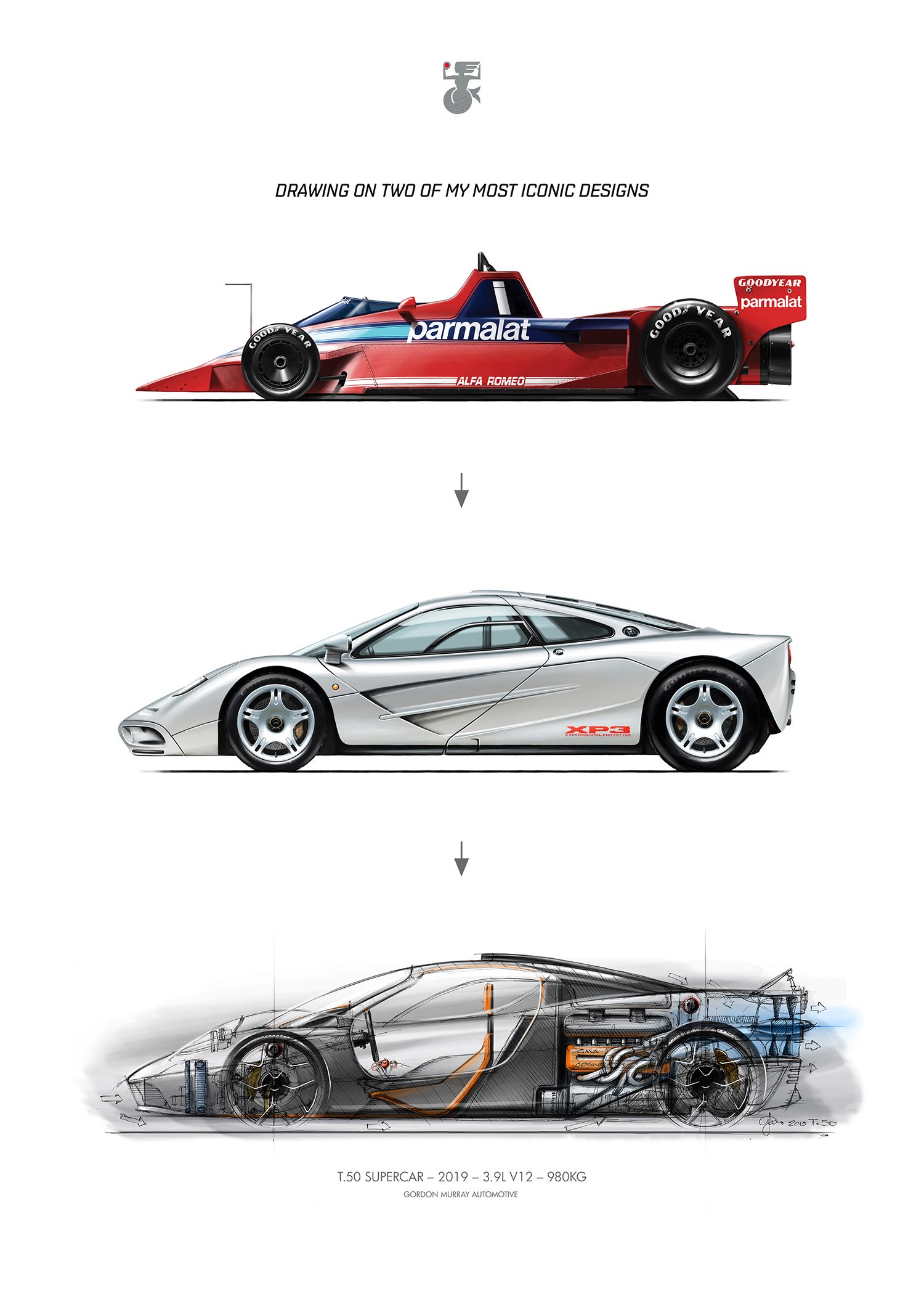Ever since McLaren unveiled the F1, people have been waiting, eyebrows up, for whatever else Gordon Murray might be cooking. The genius designer who made his name in the world of Formula 1 and designed such groundbreaking cars like the Brabham BT46B and the Brabham BT55 is finally ready to talk about his next creation. Named the T.50, it's a car tailored after the F1 with a Cosworth-developed 3.9-liter, naturally aspirated V-12 developing 650 horsepower and 332 pound-feet of twist. The cabin will take three and, as is the case with the F1, Murray won't make judgments on the top speed.
If last time around Murray was contracted by McLaren to create a road car that would incorporate the F1 know-how of Ron Dennis' squad, now, it's all done on Murray's terms. That's because the T.50 will be built by Gordon Murray Automotive and it will be designed top to bottom in-house by Gordon Murray Design. A carbon fiber monocoque will hide underneath the sleek body of the T.50, and this will ensure Murray-approved levels of lightness. Remember, the 72-year-old designer has never been a fan of the modern supercars and hypercars that put out buckets of horsepower only to be pegged back by a generous heft - like the 4,400 pounds of a standard Bugatti Chiron. As such, the T.50 will only weigh 2,160 pounds (under a tonne), and you can be sure you won't miss one on the road since that V-12 will be able to rev all the way up to 12,1000 rpm! Yes, the T.50 will have four wheels, not two.
The Gordon Murray T.50 will not be the fastest car ever but it won't matter
Many of you probably expect the Gordon Murray T.50 to shatter speed records much like the F1 did.
Well, this may not be the case. Let's not forget that, since the McLaren F1 came and went, the speed record for production cars went up quite a bit, and the current fastest production car is Koenigsegg's Agera RS that achieved a two-way average of 277.9 mph, its top speed in one of the runs being 284 mph. That was back in 2017 and, since then, nobody has even tried to challenge Koenigsegg. Bugatti said it's not interested to test the top speed of the Chiron while other companies, such as Hennessey with its Venom F5, have yet to produce valid evidence that they had something that went faster.
As such, you can understand why Murray said that "I have absolutely no interest in chasing records for top speed or acceleration. Our focus is instead on delivering the purest, most rewarding driving experience of any supercar ever built – but, rest assured, it will be quick," when asked about the T.50's projected top speed. Koenigsegg seems to be the only hypercar maker interested in getting more bragging rights by going faster anyway since the Swedes suggest the Jesko is tipped to reach 300 mph in its most bonkers specification. So Murray & Co. are focusing on making the T.50 incredibly good in other areas such as user-friendliness, day-to-day usability, and, last but not least, handling.
Day-to-day usability will be ensured thanks to a spacious cabin that will fit three seats (and "ample amounts of luggage"), the driver obviously seated in the middle.
Murray's desire is to rewrite the rules of the supercar game once more with the T.50. "Automotive enthusiasts and road-test editors have discussed the concept of ‘peak supercar’ for some time, Murray said in a press release. "The reality of chasing top speeds only adds weight, notably through ever-more powerful engines, which increase the requirement for larger, heavier ancillaries. We are taking a very different approach." Indeed, even the F1 will seem overweight in comparison to the T.50 since its 6.1-liter V-12 made it weigh 2,508 pounds in standard specification, almost 350 pounds more than the T.50.
But a low curb weight isn't the car's only attribute. Its main party piece is aerodynamics. The car will feature a 15.7-inch fan in the back that will suck air from underneath the car to make it stick to the road better, basically the same design premise behind Murray's BT46B from 1978.
Murray says the car "will deliver performance and dynamic characteristics simply out of reach for other supercars not least because of its low weight," while emphasizing that "I have focused on the complete driving experience, not horsepower or top speed." Still, the Briton reckons that his latest creation will go in history as "the last, and the greatest, ‘analog’ supercar ever built," one that will "better the F1 in every area – ingress and egress; luggage capacity; serviceability; maintenance and suspension set-up. Also, driver-selectable engine maps ensure a driving mode to suit every situation."
Sure, you can argue already that a Ferrari F8 Tributo puts out more power (710 horsepower, as much as a McLaren 720S), but the Ferrari doesn't achieve a power-to-weight of 663hp/ton. In fact, you'll have to look at cars such as the Chiron to find better power-to-weight ratios. The Bugatti boasts a ratio of 687 hp/ton, but it's way heavier and, as such, will never outrun a T.50 on track, for instance.
What's clear is that the T.50 is a car we can't wait to see pitted against some of its peers and, why not, some cars that may seem out of its immediate reach like the Aston Martin Valkyrie, the other road car to be powered by a bespoke Cosworth V-12 with no turbos but one that develops 1,160 horsepower with help from a 160 horsepower electric motor. Such comparisons have already popped up because the Valkyrie is the work of the Red Bull group and Adrian Newey, the designer of all of the championship-winning F1 Red Bull single-seaters, had an active role in the project. While I can't tell which will be faster, I am already sure there are more than enough people out there willing to pay in excess of $2.54 million for a T.50 which is a bargain since F1s traded hands for about as much 11 years ago and, now, you may have to pay as much as five times more for a standard one, let alone a GTR or LM-spec version. Also, a Valkyrie would set you back $3.25 million, so there's that...
McLaren F1 drivetrain specifications
|
Cylinders |
V 12 in 60° vee |
|---|---|
|
Capacity |
6.1 litre |
|
Bore × Stroke |
86 × 87 mm |
|
Bore/stroke ratio |
0.99 |
|
Horsepower |
618 HP @ 7,500 RPM |
|
Specific output |
101.9 bhp/litre |
|
Torque |
455 LB-FT @ 4,000 RPM |
|
Acceleration 0-60mph |
3.2 s |
|
Acceleration 0-100km/h |
3.6 s |
|
Acceleration 0-160km/h (100mph) |
6.4 s |
|
Standing quarter-mile |
11.1 s |
|
Standing kilometre |
|
|
Maximum speed |
387 km/h (240 mph) |
Further reading
Read our full review on the 1995-1997 McLaren F1 GTR.
Read our full review on the 1997 Gulf McLaren F1 GTR Longtail.
Check out more details on the McLaren F1 GTR ‘25R’ Restoration.
Read our full review on the 1993 McLaren F1.
Read our full review on the 1995 McLaren F1 LM



